The Acropolis

VulcanSpirit
Richard & Alison Brunstrom
Wed 28 Jan 2015 11:21
|
The final stage of the Tassie trip was an ascent of The Acropolis, another
three day event but on this occasion staying in a hut. Careful study of the
weather forecasts had indicated another wonderful day in the offing so off we
went. This trek involved a 16km ferry trip on Lake St Clair, followed by a 10km
walk in to the hut and the reverse to get out. All went exactly according to
plan, except for the biting cold on night one.
Here is the plateau above Pine Valley, The Acropolis in the background,
with its columns silhouetted, above the Snow Gum woodland:
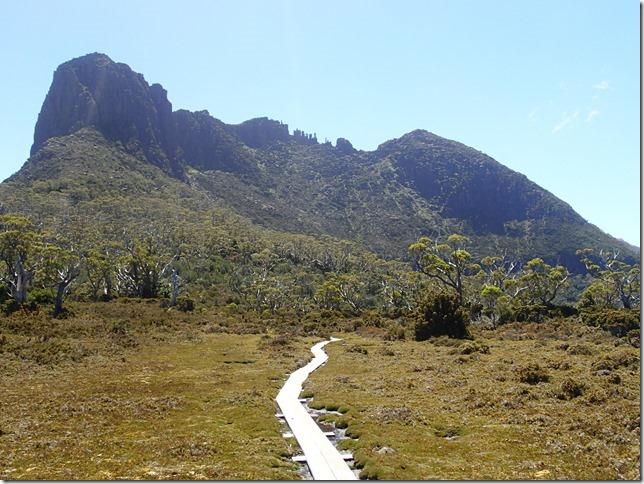 And on the very top at 1471m, with Mount Geryon (1509m) in the background.
Somewhat surprisingly this is also climbable without special equipment but time
and weather prevented an attempt:
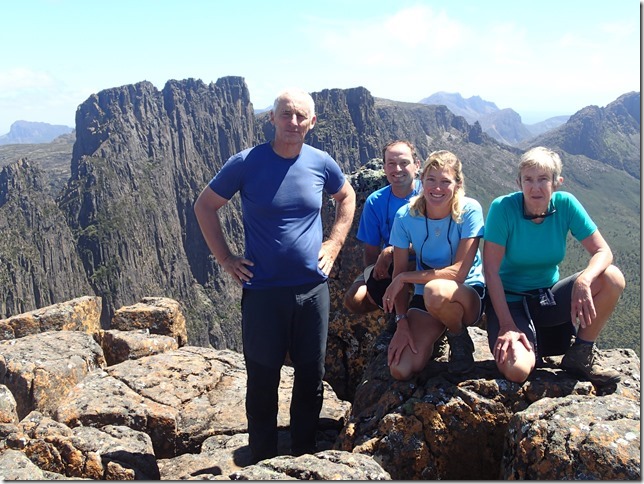 The columns of The Acropolis. Note Ali & Heather standing on the top
right:
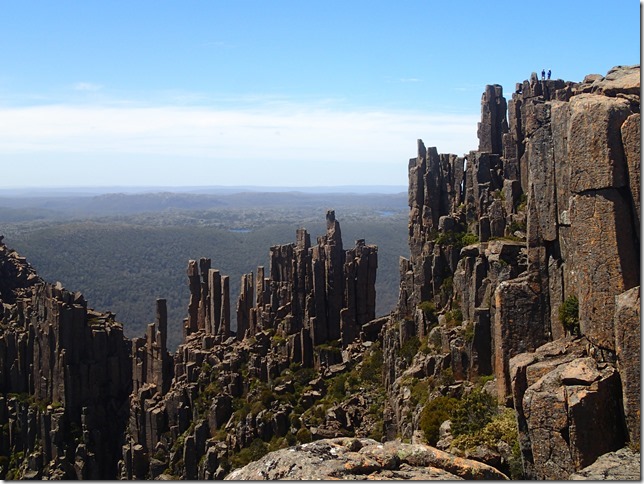 And the columns up close:
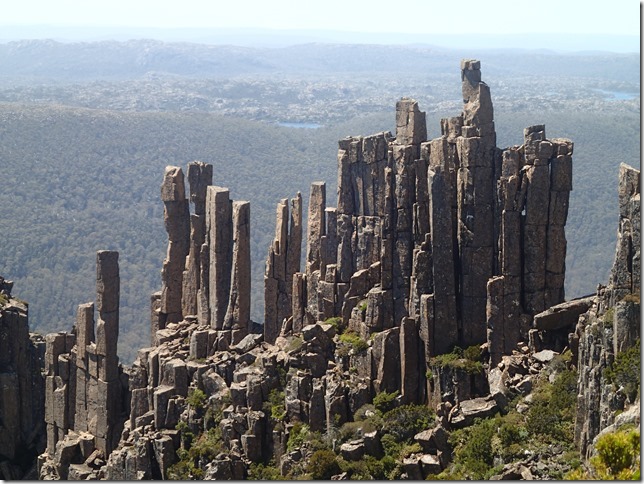 These things are just stunning. They are made of dolerite, intruded in the
Jurassic about 180 million years ago. ‘Intruded’ because this is magma injected
under softer surface rocks which have subsequently eroded away. Because it was
not exposed at the surface the magma cooled slowly allowing the rock to
crystallise into these gigantic columns. Tasmania has the largest dolerite
exposure in the world at 30 000 square kilometres and a volume of 15 000 cubic
kilometres. It’s huge.
And this area was unusually heavily glaciated during the Pleistocene, only
a few thousand years ago, resulting in the smashed piles of jagged boulders on
all the mountain tops. A truly wonderful place on a good day. Sadly they’re all
too rare. We’ve been lucky; these tops are clear for less than 100 days per year
normally.
And then the walk out through the Snow Gums:
 At Kosciuszko the treeline was at 1800-1900m. Here, so much further south
it is at about 1200-1300m with a superb range of primitive survivors from
Gondwanaland. I’ll resist the temptation to do too much botanising this time,
but here is a really special Australian tree:
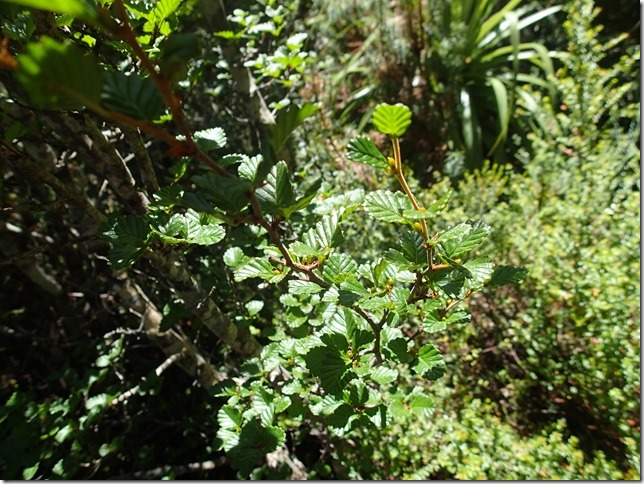 These are the leaves of Nothofagus gunnii, known locally as fagus.
This is a southern beech, closely related to the beeches of NZ and South
America. It is endemic to Tasmania, forming a low or creeping shrub at the
treeline and a small tree up to exceptionally 9m lower down. It is particularly
special as Australia’s only native deciduous tree forming brilliant carpets of
red and gold in the autumn. As you can see it has very beech-like leaves to the
British eye, much more so than its close relative the Myrtle Nothofagus
cunninghamii which is a huge and beautiful upland forest tree.
And so the VS’s Tassie road trip comes to an end. Now it’s back to Hobart
and the hard work of getting ready for the Southern Ocean in a few days’ time.
Our American friends have departed for warmer climes by plane today and we’re on
our own again.
|